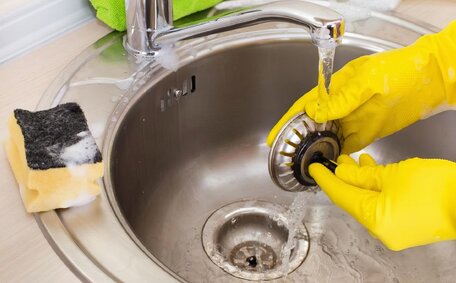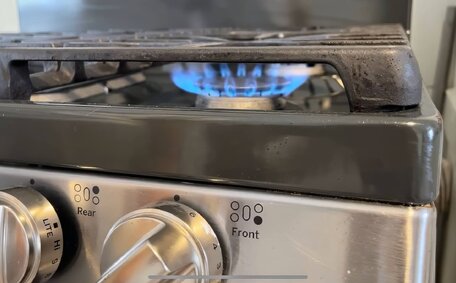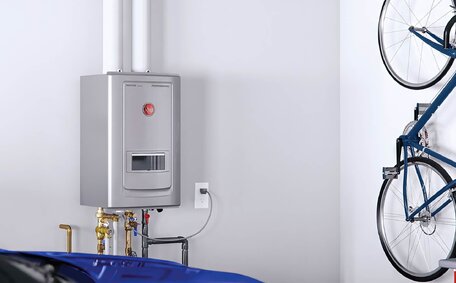Introduction to pipe relining
Drain pipe relining is a no-dig method for repairing damaged pipes, eliminating the need for excavation. Plumbers and drainage specialists use it as a contemporary alternative to traditional pipe replacement, lining the interior of the existing structure.
This technique involves inserting a resin-coated liner into the existing pipe through an access point, such as a manhole. The liner hardens, efficiently crafting a new lining within the host pipe, regardless of the extent damage may appear. This technique restores pipe structure and flow without digging trenches or damaging landscaping.
Pipe relining adeptly tackles common plumbing problems, including tree root intrusion, corrosion, and cracks, as well as resolving blockages. Pipe relining is ideal if you’re seeking a quick, less disruptive, and cost-effective alternative to drain replacement. Relined pipes also have a long service life and prevent the need to dig pipe trenches.
As leading Sydney plumbers, Pennant Hills Plumbing specialises in prompt trenchless pipe repairs, swiftly addressing plumbing issues. Our team delivers comprehensive pipe relining services, expertly assessing damage, detecting leaks with CCTV, and executing relining with minimal impact on your property.
Why is pipe relining the best method for modern pipe repair?
The pipe relining process involves several key steps:
- Inspection - A drain camera evaluates the damage within the pipe, identifying blockages or other hindrances to determine necessary repairs. This CCTV inspection ensures the technician can plan the repair accordingly.
- Cleaning - High-pressure water jets or compressed air remove accumulated debris and sediment, preparing the pipe for relining.
- Resin Impregnation - A felt liner soaked in a two-part epoxy resin is inserted into the damaged pipe through an access point and then cured in place. The liner covers the interior surface area.
- Curing - The epoxy resin is solidified using hot water, UV light, or ambient curing methods. As it hardens, it forms a smooth, seamless new pipe lining within the old pipe.
- Final Testing - Video inspections and pressure tests confirm the relined pipe’s integrity and flow efficiency. We thoroughly re-inspect any issues to guarantee they meet our high standards.
This trenchless technique ensures undisturbed landscapes, making it ideal for residential and business properties as it requires no digging. The resin solidifies to forge a sturdy, long-lasting lining that renews the structural integrity and flow capacity of an aged sewer line. Pipe relining can be faster, cleaner and less disruptive than traditional pipe replacement methods.
The pipe relining process step-by-step
Here is an overview of the key steps involved in relining a damaged pipe:
- Inspection - A camera inspection is conducted through the pipe to ascertain damage and blockages. This allows the plumber to confidently plan the repair, to make sure they know precisely what they are doing.
- Cleaning - High pressure water jets scour the pipe interior to remove debris and buildup for optimal lining conditions.
- Resin Impregnation - A felt liner saturated with epoxy resin is inserted into the pipe via an access point.
- Curing - The resin hardens through various methods, including ambient temperature, hot water steam, or UV light. This hardens the resin into a smooth new pipe lining.
- Testing - Cameras and pressure tests check for leaks, integrity, and flow. Any hurdles can be resolved before jobs can completed with efficiency and precision.
Relining stands as an eco-friendly, minimally invasive solution your pipe function restoration needs. It minimises excavation and preserves the landscaping of your home or business. The result is a robust new barrier inside the damaged pipe, without the mess and costs of conventional replacement methods.
Benefits of pipe relining
Pipe relining provides several benefits over traditional pipe replacement, especially for sewer lines:
- One of the benefits pipe relining offers is the minimal disruption; no digging or demolition required, thus protecting your landscaping and structures.
In summary, pipe relining offers a speedy, efficient, and minimally invasive solution for damaged pipes, and is more cost-effective than full replacement.
Pipe relining vs traditional pipe replacement
Pipe relining provides numerous advantages compared to full pipe replacement:
A 100m failing cast iron drainage pipe in a commercial building was fully relined in a mere 3 days. This preserved the carpark concrete and landscaping - here some decisive advantages come into play. Replacement would have taken 2 weeks and cost over $100,000 more in excavation, new materials, and restoration.
In residential settings, there is no need for replacing old pipes, so front yard trees and gardens remain untouched. Backyard pools, patios, and structures also remain fully intact.
Trenchless pipe relining is an effective, non-destructive repair solution for stormwater systems. It restores structural integrity and flow capacity at a fraction of the cost, time and mess of full pipe replacement projects.
When to choose pipe relining
Pipe relining is the go-to solution for various situations:
- Minor pipe damage - Small cracks, holes or joint misalignments can be repaired without replacement.
- Root intrusion - Tree roots infiltrating pipes are effectively blocked by the epoxy barrier.
- Reduced flow - Buildup narrowing the pipe interior is eliminated with relining.
- Minimal excavation - Relining eliminates the need to dig up floors, yards, driveways.
- Structural integrity - Deteriorated and corroded pipes are reinforced.
- Commercial properties - Minimises business disruption during plumbing repairs.
However, complete pipe replacement may be better if:
- Broken pipes have widespread structural damage or complete blockages.
- Existing pipes are undersized and unable to meet demand.
- Asbestos cement pipes need removal for health reasons.
- Severely misaligned pipes don’t allow liner insertion.
In most situations, pipe relining is the preferred trenchless repair method. It restores function and flow without excavation. An experienced plumber can advise the best method of pipe repair suitable for your specific situation.
- Minor pipe damage - Small cracks, holes or joint misalignments can be repaired without replacement.
- Root intrusion - Tree roots infiltrating pipes are effectively blocked by the epoxy barrier.
- Reduced flow - Buildup narrowing the pipe interior is eliminated with relining.
Cost savings with pipe relining
While the initial quote for relining may be similar to replacement, the downstream expenses make it considerably more affordable.
Full pipe replacement requires extensive excavation, resulting in high costs for labour, equipment, and landfill disposal fees. There are additional expenses for landscape and surface restoration after backfilling the trench. The process often necessitates permits, road closures, and traffic control.
Pipe relining does pipe relining reduce cost, time, and hassle associated with these ancillary expenses. The speed of installation reduces labour costs as well. No landfill fees apply, enhancing the eco-friendly appeal.
Access is through small excavated entry pits at either end of the pipe run, minimising surface disruption.
Homeowners can save thousands of dollars with pipe relining. The project can typically be completed in just one day rather than several weeks for full replacement. This reduces accommodation expenses and reduces the inconvenience and costs for residents if they would otherwise need temporary relocation, with the convenience of same-day service.
For commercial sites, Businesses can operate as usual during relining, avoiding income loss. Carparks, signs, pathways, and landscaped areas remain usable, so there’s no need for anyone’s routines to be interrupted as Pennant Hills Plumbing experts come out swiftly to execute the task.
While pipe relining may have a similar upfront price, the multitude of cost savings make it a highly affordable repair method. The fast, minimally invasive process results in significantly lower expenses than full pipe replacement projects.
While the initial quote for relining may be similar to repl resulting in high costs for labour, equipment, and landfill disposal fees. There are additional expenses for landscape and surface restVC (polyvinyl chloride) - One of the most common modern pipe materials used for drains. PVC can become brittle with age but relining restores strength and flow.
- Concrete - Concrete pipes are prone to cracks and damage over time. Relining provides a structural reinforcement and barrier inside against further deterioration.
- Clay - An older material still found in many drainage systems. Relining rejuvenates old clay pipes from the inside out.
- Cast iron - Cast iron pipes are durable but eventually succumb to rust and corrosion. Relined cast iron pipes can last for decades.
- Galvanised steel - Like cast iron, galvanised steel pipes corrode from the inside over time. Relining stops further corrosion and provides a smooth new flow barrier.
- Asbestos cement - Although uncommon today, some old asbestos cement pipes remain. Relining allows them to be repaired rather than replaced.
The premium epoxy resins and installation processes we use are synonymous with optimised plumbing at Pennant Hills Plumbing and are compatible with all these plumbing pipe materials. Our experts carefully repair your plumbing and will inspect your pipes to advise the most suitable relining strategy.
Relining efficiently repairs pipes of varying diameters, from 100mm drain sewers to large 300-600mm pipelines, relining offers a swift and efficient no-dig solution. With minimal excavation needed, it is much less destructive than replacing deteriorated pipes.
Pipe relining is a versatile trenchless technology capable of repairing pipes made from a wide range of materials, including:
PVC (polyvinyl chloride) - One of the most common modern pipe materials used for drains. PVC can become brittle with age but relining restores strength and flow.Considerations before getting pipe relining
There are a few key considerations to weigh up before opting for pipe relining:
- Assess damage - Anyone would like a plumber repair pipes effectively or if a full substitute is imperative.
- Understand your plumbing system - Know what pipe types, size and length of pipes on your property. This assists in planning the relining project and determining access points.
- Get professional advice - Find out more about tailored solutions during a specialist consultation with reputable plumbers like Pennant Hills Plumbing, who advise based on your unique situation.
- Consider costs - Get comprehensive quotes outlining projected costs for relining compared to replacement. Factor in long-term savings from minimal excavation.
- Check warranties - Most companies offer long warranties on relining work. Check terms and conditions carefully.
- Look for experience - Choose a plumber with an extensive relining track record. Check reviews and certifications, which would highly recommend the provider for their expertise.
- Minimise disruption - Discuss how the work will impact your property and Make sure the procedure causes you minimal inconvenience.
Taking time to evaluate these key points will ensure you make an informed decision about the suitability of pipe relining for your circumstances and property.
Choosing a professional pipe relining company
Choosing an experienced, reputable provider like Pennant Hills Plumbing is crucial when considering pipe relining. To ensure satisfaction, use these tips and you’ll want to use them again for selecting the right provider:
- Look for proven expertise - Choose a company that specialises in relining and has many years of experience. Check industry accreditations and training.
- Check their track record - It’s advisable to read reviews and evaluate their portfolio to confirm quality work which makes it easier to recommend them.
Warranties - Opt for a year guarantee on workmanship and materials, extending for at least five years.- Reputation - A company that came out as very professional and distinguished for reliability, outstanding quality work, and client satisfaction stands out as a prudent choice.
The dedicated team from Pennant Hills Plumbing did great job meeting all the essential criteria. If you require assistance, they sent a representative to offer an obligation-free consultation about your drain repair and pipe relining needs.






